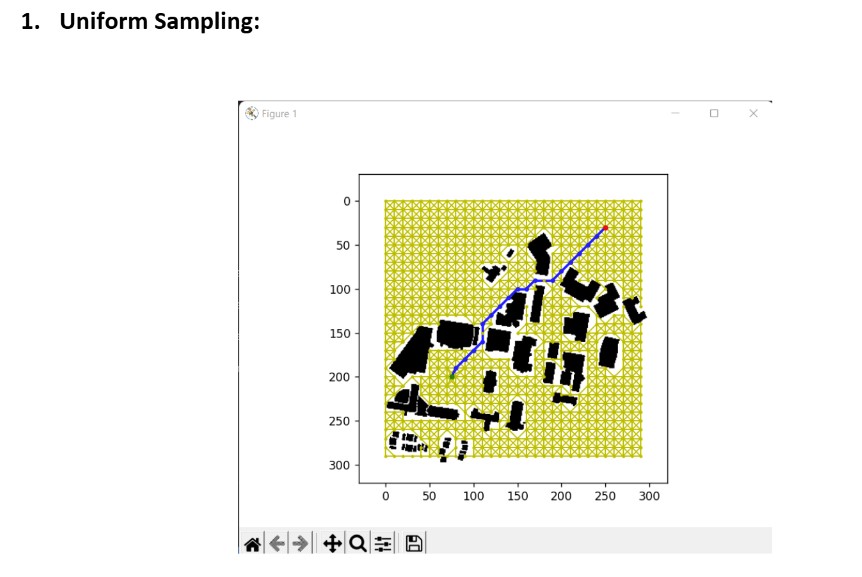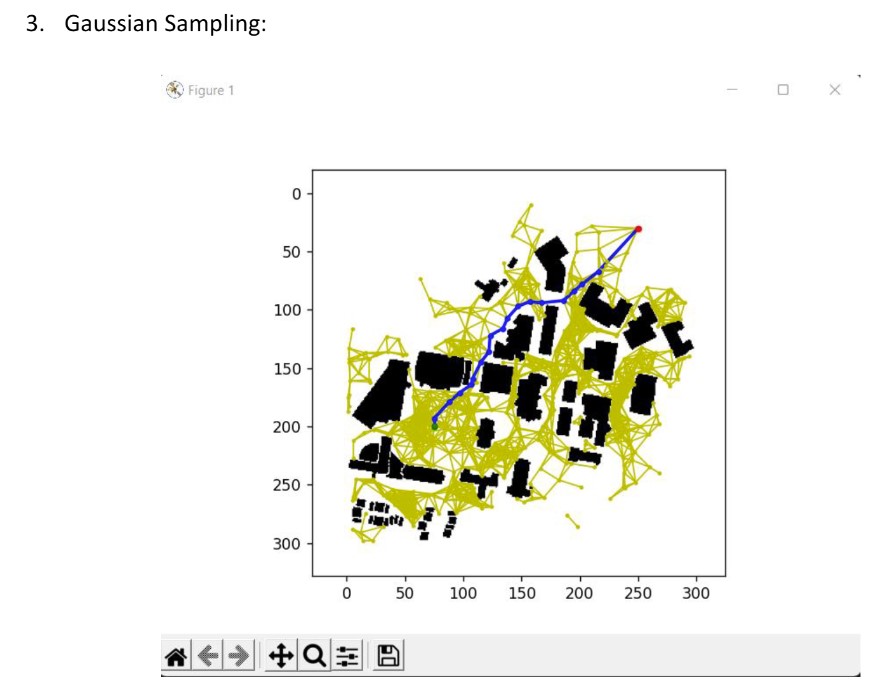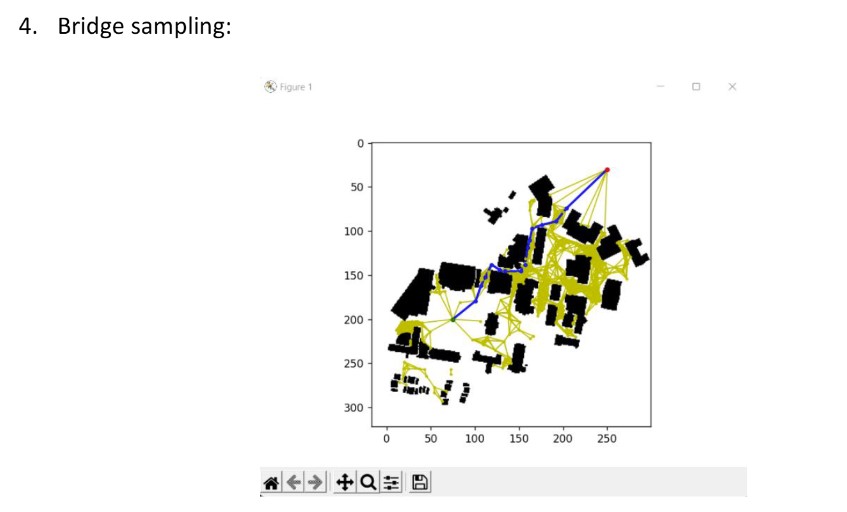PRM based Motion Planning
Implemented Probablisitc Roadmap Algorithm using Random, Uniform, Gaussian, and Bridge-sampling methods.
The Probabilistic Roadmap (PRM) algorithm is a fundamental method in robotic path planning, particularly effective in high-dimensional configuration spaces. It constructs a network of feasible paths by randomly sampling points in the environment and connecting them to form a roadmap, which a robot can then use to navigate from a start to a goal position.
Key Features of PRM:
Two-Phase Approach:
- Learning Phase: Randomly samples the configuration space to generate nodes and attempts to connect these nodes with collision-free edges, forming a roadmap.
- Query Phase: Utilizes the precomputed roadmap to find a path between the start and goal configurations using graph search algorithms like A*.




PRM algorithm implemented on Uniform, Random, Gaussian, and Bridge sampling.
Advantages:
- Probabilistic Completeness: Ensures that a path will be found if one exists, given sufficient sampling.
- Efficiency in Complex Spaces: Particularly useful in environments with numerous obstacles, as it doesn’t require an explicit representation of the free space.
Implementation Considerations:
- Sampling Strategy: The quality of the roadmap depends on the sampling density and distribution.
- Collision Detection: Efficient algorithms are necessary to verify that nodes and edges are within the free space.
- Graph Search: Algorithms like A* or Dijkstra’s are employed to find the shortest path on the constructed roadmap.